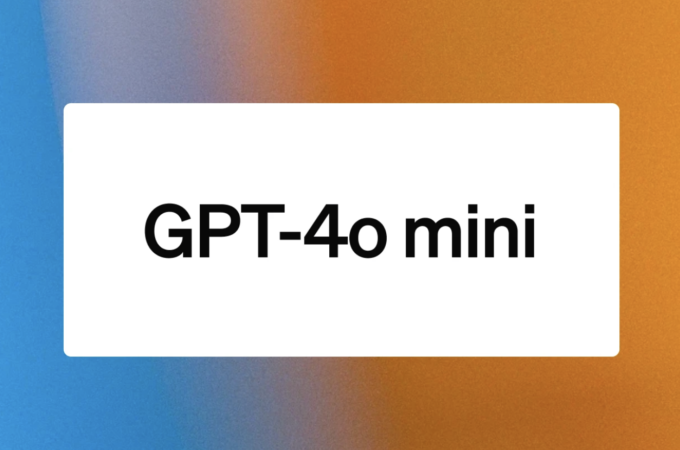
How IoT Is Improving Fintech
The Internet of Things (IoT) has already pervaded various aspects of our everyday lives. Digitalization has fundamentally transformed how we monitor our health, operate kitchen appliances like those at Appliance Hunter, and take college exams.
And the next great industry IoT is predicted to gain a foothold is FinTech.
Financial Technology (FinTech) represents innovative computer programs, software, and other technologies that enable and improve the delivery and use of banking and financial services.
FinTech already heavily relies on tech; online payments are taking over the old-school bills, and crypto is encroaching on the territory where fiat currency used to rule. Thus, IoT integration is a natural step in bringing financial services closer to consumers, simplifying banking processes, and improving fiscal security.
In this article, we discuss the X ways in which IoT is revolutionizing the FinTech ecosystem.
#1 Cashless Payments
Contactless payment was rapidly adopted as one of the main spread-prevention measures at the onset of the COVID-19 pandemic. Three years later, the popularity of the cashless payment trend doesn’t seem to wane.
Namely, statistics reveal that, in 2021, 80% of US consumers purchased using contactless payments. The trend is undoubtedly accelerating, as the value of the global contactless payment market is projected to nearly quadruple by 2026.
One of the ways IoT supports further advancements in the cashless payment trend is through wearable technology.
IoT makes it possible for FinTech companies to develop gadgets, such as smartwatches, that could function as payment systems. Besides making payments, these smart wristbands would allow us to view our credit history and balance.
In the next years, financial institutions plan to work together with IT support companies in NJ on developing these wearable gadgets and integrating them as a commonplace payment option.
#2 Improved Security
Nowadays, we unlock our phones with a fingerprint and use double authentication to log on to Facebook. The use of IoT tech is expanding, and employing these innovations to improve banking security is no exception.
Besides making a payment or checking our credit card balance with a selfie, IoT has made it possible for banks to retain users’ login credentials. Moreover, IoT-enabled devices collect data about users’ habits and preferences, thus helping banks detect unusual activity and prevent possible scams.
Advancements in IoT technology will further bolster FinTech security and authentication practices, particularly in terms of security and payment processing. IoT services allow for early fraud detection by identifying any fraudulent behaviors aimed at stealing data.
For example, IoT has become an integral element of processing and encrypting payment information in mobile point-of-sale systems and cybersecurity technologies. With an it Red Deer services provider, you can grow and shrink your IT expenses more easily. As well as keep your information on lock after an employee leaves.
#3 Voice-Appropriate
Voice technology is one of the mainstays of IoT. Voice-activated tech has made its way into different day-to-day aspects, such as searching the Web, or writing using speech-to-text software.
The finTech industry is no stranger to leveraging the benefits of voice tech.
According to Business Insider, by the end of 2022, AI voice assistants will yield over $8 billion in operational costs across global financial institutions.
A few years back, Amazon’s Alexa was under development to ensure the safe processing of sensitive financial data, including card balances, pending transaction data, and more.
#4 Better Spending Transparency
Banking apps and online platforms generally provide extensive information on our credit/debit card balance, spending history, and payments received. However, IoT technology can take the understanding of our financial habits to the next level.
Instead of saving payment slips and bank statements, Internet of Things technologies can be leveraged in FinTech to track our spending and plan our budget. Monitoring our spending patterns can help in smart decision-making regarding resource allocation.
#5 Support & Personalization
Impeccable customer support and personalized user experience aren’t reserved for eCommerce businesses alone. Banks and other financial institutions can improve their services by leveraging IoT.
According to stats, banks allocate an average of 79% of their IT expenditure to improving customer satisfaction. Fintech organizations can reduce this spending thanks to AI and IoT technologies.
For instance, AI and IoT can provide immediate customer service. AI-based chatbots can reduce the time spent waiting for a representative, provide answers to common questions, and assist in resolving support cases.
Moreover, smartphones could act as a beacon to alert bank branches of a client’s arrival. Likewise, FinTech businesses can use context-aware gadgets to hyper-personalize the banking experience.
#6 Smart Banks
Similarly to an omnichannel experience in digital marketing, banks can integrate IoT functionalities to create a more connected, customer-value-driven environment.
For example, IoT can help bank branches receive client details in real-time, as soon as they arrive at their scheduled appointment. In addition, customers can also schedule a cash withdrawal from the ATM via IoT-powered devices.
IoT allows banks to track their ATM systems and predict outages cash shortages or maintenance issues.
Banks can use patterns and data fetched by IoT to more strategically place ATMs depending on the demand and needs of their customers. Moreover, the tech can be used for analyzing the frequency of ATM usage within an area and assessing locations for future ATM installations.
Another opportunity for banks to make use of customer location, activities, and habits to improve client engagement and assess creditworthiness.
Get a website audit from Madavi to identify and fix issues affecting your site’s performance, ensuring optimal functionality and improved user experience.
#7 Reduced Bank Branch Traffic
IoT technologies render frequent bank visits futile, as the majority of services can be done online.
Stats suggest a downward trend in consumer visits to bank branches. By the end of 2022, they are set to drop 36% compared to 2016. Within the same period, mobile transactions will experience a rise of 121%.
Customers shift to using banking services via apps and online platforms. It’s a win-win situation for both, as clients need not waste their time and energy queuing in lines, and banks can cut operational costs by downsizing the number of branches and streamlining their efforts into an improved customer experience.
Still, if a client visit is inevitable, banks can use IoT tech to make the customer experience as convenient as possible. For example, IoT-powered software can match the client with the bank employee, adequate for helping with their issue.
To Sum Up
The Internet of Things can make a valuable impact on a variety of essential aspects of the Fintech industry. Banks and other financial companies began adopting IoT, but its possibilities are far greater than those leveraged today.
Customer demands are increasing, and to meet them adequately, banks should integrate IoT solutions across their processes.
As the majority of clients opt to manage their finances via online, IoT-based technologies, so does the need for seamless user experience and the highest data safety rise. For example, many people started trading with crypto, being a new field for many people. It is possible that a crypto trading profit calculator will be useful for this field.
Therefore, FinTech companies should thus opt for development solutions made by skilled, experienced, and trustworthy teams of IoT professionals. The financial industry is not immune to the trend, but to reap the maximum benefits of IoT, banks need a robust and feature-packed digital product.
Photo by Daniel Cañibano on Unsplash




